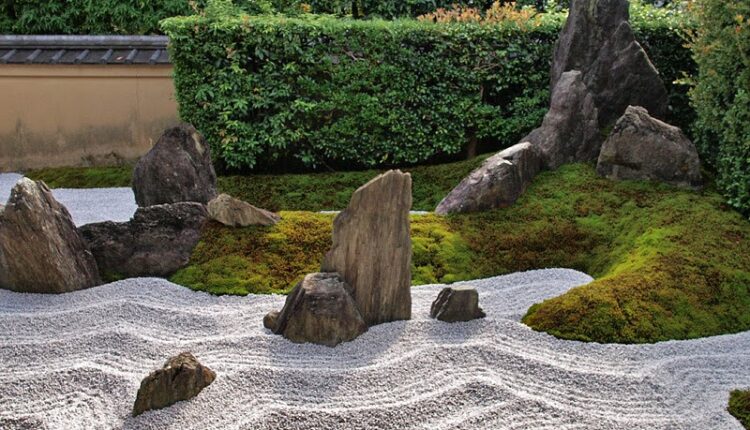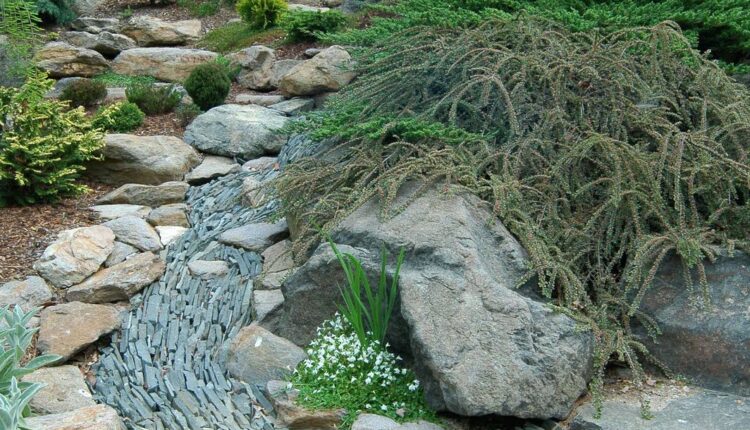Dry Water Japanese Garden Design
Dry water is prevalent in Japanese gardens, and it is very eye-catching too. Wait a minute; I hear you questioning the term ‘dry water’- it’s a contradiction. Well, YES and NO! And it’s the NO part I will concentrate on in this small article. But let me clarify the rules of water sources and features in these specific types of gardens.
Water sources in these types of gardens should appear as natural as possible and blend in with the surroundings. Fountains do not exist in Japanese gardens; waterfalls, but fountains, no. They are artificial and not ‘natural’ in appearance. Don’t get me wrong; I am not a fountainist. It’s just with Japanese gardens; specific rules need to be followed. If you wanted a fountain in a Japanese garden, it’s not a heinous crime, but your garden would not be wholly authentic!
Streams- nearly always artificial are a big part of Japanese gardening; they often are built with curves giving them a more natural appearance. The positioning of lanterns is more often than not by streams or ponds within a garden. Which represents the female and the male elements of ‘water’ and ‘fire’.
In Japanese tradition, this is known as YIN and YANG. Any stream in a Japanese garden will have deliberate imperfections designed to give the ‘water’ a ‘natural’ look and an organic feel. The shapes of ponds must look natural for this reason as well.
Water is never placed in the centre of the garden particularly ponds. These will often have larger stones within them to simulate islands. Sometimes it is common for them to have a small waterfall. The use of stones is always very structural and symmetrical and also applies to all varieties of oriental gardens.
OK, that’s the wet stuff out of the way. Let’s move on to the concept and usage of ‘Dry Water’ in Zen gardens. In Zen gardens, it is relatively straightforward- sand is used to replicate water, and this makes smaller landscape reproductions far easier. A Zen garden will more often than not show a miniature landscape with mounds for mountains and sand to depict water. The sand is raked to give its ‘watery’ appearance and can be raked in different styles repeatedly.

In Japanese gardens, ‘Dry water’ is often featured in ‘Karesansui’ gardens. It’s one of the most popular types you can visit or attempt to design and build, and in English, it means ‘Dry mountain stream’. These types of Japanese gardens are known simply as ‘Dry’ gardens and are heavily influenced by Zen Buddhism. They are peaceful, simple and waterless- rocks are used to symbolise land masses and the ‘Dry water’ -or- SAND/GRAVEL is raked to make it look like the sea or a large body of water. Brilliantly clever and with meaning too.
Many hundreds of years ago, this type of garden was built by ‘Senzui Kawarami’ in a simple English translation which means ‘Mountain, Stream and Riverbed people’. They were master craftsmen by trade and vocation and specialised in building these stunning Zen-influenced gardens. Scholars generally accept that these types of gardens design originated in China, as does a good deal of Japanese garden history and influences. But that is another story.

